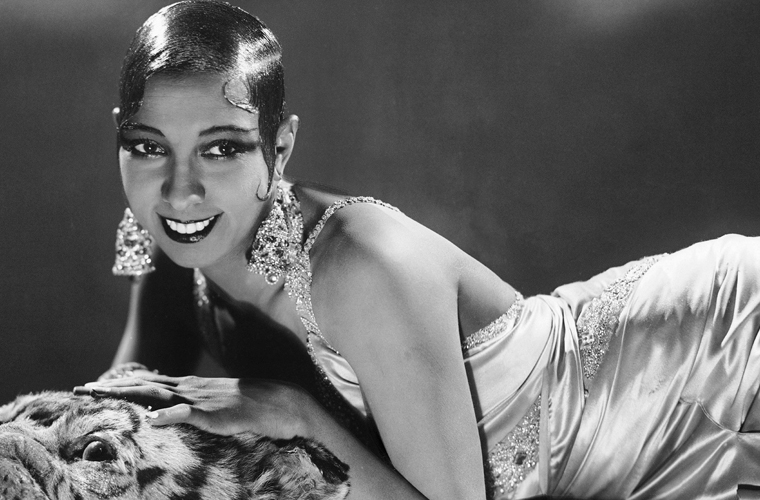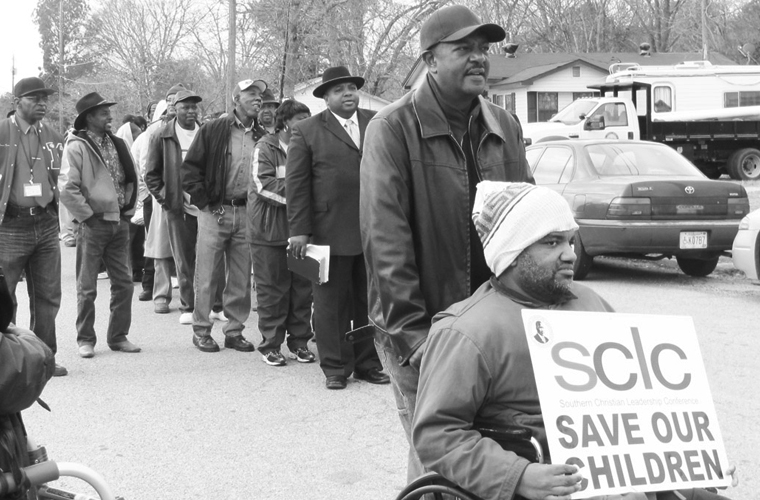The FBI ran a domestic counter-intelligence program (COINTELPRO) that quickly evolved from a legitimate effort to protect national security from hostile foreign threats into an effort to suppress domestic political dissent through an array of illegal activities. The Senate Select Committee that investigated COINTELPRO (the “Church Committee”) said the “unexpressed major premise of. COINTELPRO is that the Bureau has a role in maintaining the existing social order and that its efforts should be aimed toward combating those who threaten that order.”
COINTELPRO was independent of other government agencies and was established and organized solely to covertly “expose, disrupt, misdirect, discredit, or otherwise neutralize” the activities of FBI targets. In an FBI field office, each COINTELPRO was assigned to a special agent, who in turn reported directly to the Special Agent in Charge (SAC) of the office. SACs were direct links between field office activity and J. Edgar Hoover, the FBI director throughout the entire COINTELPRO era.

Virtually all activity and transfer of information within COINTELPRO occurred in the form of memos sent between the director’s office in Washington and field offices located throughout the country. These memos are accessible to the public under the Freedom of Information Act. Overall, the FBI has released 2,487 separate memos related to COINTELPRO activity against “New Left” targets.
Three of the most common claims regarding this FBI activity; namely that level of repression was positively related to protest groups’ level of activity, size, and association with previous acts of violence. The level of tangible threat of a New Left group, based on its size, level of activity, or propensity for violence, did not directly impact the structure of FBI activity under COINTELPRO. Instead, the characteristics of targeted groups were mediated by organizational processes endogenous to the FBI itself.
Specifically, central actors in the FBI manipulated organizational controls to ensure that visible (i.e., nonlocal) targets were repressed independent of the target’s local activities. National-level protest organizations that initiated disruption were defined as targets, which created an expectation that these groups would be repressed wherever they were located, despite the FBI’s ostensible focus on identifying threats on the local level.
The directorate’s connection to all field offices created a basis for ensuring that this repressive activity was implemented, even by field offices that reported an absence of activity by local chapters.
Certain counterintelligence programs were conducted by the FBI from 1956 to 1971 against several domestic and foreign-based subversive or disruptive groups, organizations, and individuals. These efforts, which carried the designation “COINTELPRO,” were targeted against the Communist Party U.S.A., the Socialist Workers Party, the New Left, White House groups, and Black Extremist organizations, as well as certain espionage operations and hostile foreign-based intelligence services.

J. Edgar Hoover viewed left-leaning artists to be a security risk. The FBI amassed a collection of files on singer Josephine Baker, actress Jean Seberg, author E.B. White, painter Georgia O’Keefe, and sculptor Alexander Calder. The FBI collected over 600 pages from the 1940s to early 1970s regarding musician Leonard Bernstein, including hundreds of pages about his support for the civil rights and antiwar movements. The FBI and the Immigration and Naturalization Service (INS) also collected more than 26 pounds of information about the Beatles’ John Lennon.
The Bureau conducted five “counterintelligence programs” aimed against domestic groups: the “Communist Party, USA” program (1956–71); the “Socialist Workers Party” program (1961-69); the “White Hate” program (1964-1971); the “Black Nationalist-Hate Group” program (1967-71); and the “New Left” program (1968-71).
While the declared purposes of these programs were to protect the “national security” or prevent violence, Bureau witnesses admit that many of the targets were nonviolent, and most had no connections with a foreign power. Indeed, nonviolent organizations and individuals were targeted because the Bureau believed they represented a “potential” for violence so nonviolent citizens who were against the war in Vietnam were targeted because they gave “aid and comfort” to violent demonstrators by lending respectability to their cause. The imprecision of the targeting is demonstrated by the inability of the Bureau to define the subjects of the programs. The Black Nationalist program, according to its supervisor, included “a great number of organizations that you might not today characterize as a black nationalist but which were in fact primarily black.” Thus, the nonviolent Southern Christian Leadership Conference was labeled as a Black Nationalist “Hate Group.”
Furthermore, the actual targets were chosen from a far broader group than the titles of the programs would imply. The CPUSA program targeted not only Communist Party members but also sponsors of the National Committee to Abolish the House Un-American Activities Committee and civil rights leaders allegedly under Communist influence or not deemed to be “anti-Communist”. The Socialist Workers Party program included non-SWP sponsors of antiwar demonstrations which were cosponsored by the SWP or the Young Socialist Alliance, its youth group.”‘ The Black Nationalist program targeted a range of organizations from the Panthers to SNCC to the peaceful Southern Christian Leadership Conference and included every Black Student Union and many other black student groups.

New Left targets ranged from the SDS to the Inter-University Committee for Debate on Foreign Policy, from Antioch College (“vanguard of the New Left”) to the New Mexico Free University and other “alternate” schools, and from underground newspapers to students protesting university censorship of a student publication by carrying signs with four-letter words on them.
The FBI’s counterintelligence program was developed in response to needs at the time to quickly neutralize organizations and individuals who were advocating and fomenting urban violence and campus disorder. The riots, which swept America’s urban centers beginning in 1965, were quickly followed by violent disorders which paralyzed college campuses. Both situations led to calls for action by alarmed Government leaders and a frightened citizenry.
An Associated Press survey noted that, during the first nine months of 1967, racial violence in 67 cities resulted in 85 deaths, injuries to 3,200 people, and property damage of over $100,000,000. The February 1970 issue of Security World stated that during the period January 1 to August 31, 1969, losses specifically traced to campus disorders amounted to $8,946,972. In March 1965, then Senator Robert F. Kennedy predicted more violence in the South and North after Congress passed voting rights legislation. Kennedy said, “I don’t care what legislation is passed-we are going to have problems…violence.” A United Press International release on December 5, 1967, quoted Pennsylvania Governor Raymond P. Shafer as a warning that “urban disaster” in the form of “total urban warfare” is waiting in the wings to strike if the race problem is not solved in the Nation’s cities.

Attorney General Ramsey Clark reported to President Johnson on January 12, 1968, according to the Washington Star, that extremist activity to foment “rebellion in urban ghettos” has put a severe strain on the FBI and other Justice Department resources. Clark called this “the most difficult intelligence problem” in the Justice Department. A United Press International release on February 13, 1968, stated that President Johnson expected further turmoil in the cities and “several bad summers” before the Nation’s urban problems are solved.
The New York Times reported on October 11, 1970, on “The Urban Guerrillas-A New Phenomenon in the United States” and noted that the Senate Subcommittee on Internal Security recently heard four days of testimony on four bills aimed at “crushing the urban guerillas” including one “that would make it a crime to belong to or aid organizations advocating terrorism, and would prohibit the publication of periodicals that advocate violence against police and the overthrow of the Government.”
The United States Capitol was bombed; other explosions rocked public and private offices and buildings; rioters led by revolutionary extremists laid siege to military, industrial, and educational facilities; and killings, maiming, and other atrocities accompanied such acts of violence from New England to California. The victims of these acts of violence were human beings-men, women, and children who looked to the FBI and other law enforcement agencies to protect their lives, rights, and property. An important part of the FBI’s response was to devise counterintelligence programs to minimize the threats and fears confronting these citizens.
The first of these FBI counterintelligence programs – one directed at the Communist Party, USA – was instituted in September, 1956. None of the programs was continued beyond April 1971. The purpose of these counterintelligence programs was to prevent dangerously, and even potentially deadly, acts against individuals, organizations, and institutions – both public and private – across the United States. They were designed to counter the conspiratorial efforts of revolutionary elements in this country, as well as to neutralize extremists of both the Left and the Right, who were threatening and in many instances fomenting acts of violence.

FBI employees involved in these programs acted entirely in good faith and within the bounds of what was expected of them by the President, the Attorney General, the Congress, and the American people. Each of these counterintelligence programs bore the approval of the then Director J. Edgar Hoover. Proposals for courses of action to be taken under these programs were subject to approval in advance, as well as to constant review, by FBI Field Office and Headquarters officials.
In carrying out its counterintelligence programs, the FBI received the personnel encouragement of myriad citizens both within and without the Government. Many Americans feared for their own safety and of their Government. Others were revolted by the rhetoric of violence and the acts of violence that were being preached and practiced across the country by hard-core extremists.
Throughout the tenure of these programs, efforts admittedly were made to disrupt the anarchistic plans and activities of violence-prone groups whose publicly announced goal was to bring America to its knees. In November 1975, William B. Saxbe, Attorney General of the United States, said “For the FBI to have done less under the circumstances would have been an abdication of its responsibilities to the American people.”
On June 18, 1974, Eugene H. Methvin, Senior Editor, The Readers Digest, testified before the House Committee on Foreign Affairs regarding terrorism and noted, “…the FBI’s counterintelligence program against the extremist core of the New Left was a model of sophisticated, effective counter-terrorist law enforcement action first developed and applied with devastating effect against the Ku Klux Klan in the mid-1960s. In that context, the strategy won great publicity and praise, yet now we have the Attorney General condemning it. In the current climate of justifiable revulsion over Watergate, we are in danger of crippling law enforcement intelligence in a hysteria of reverse McCarthyism in which we close our eyes to evidence and some compelling necessities of domestic and international security.”

